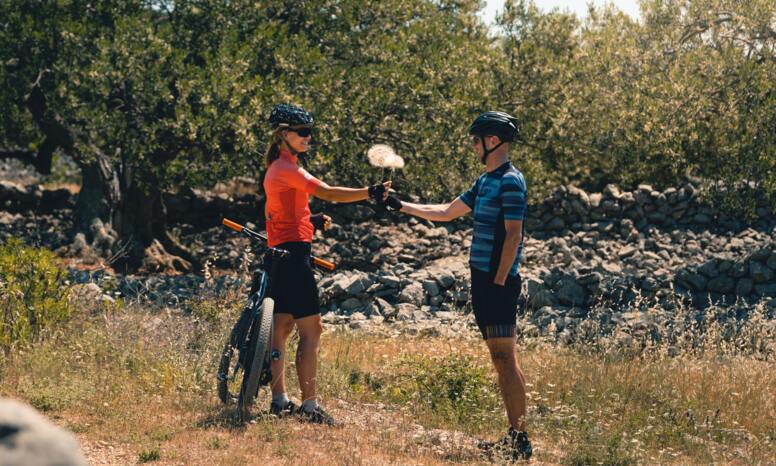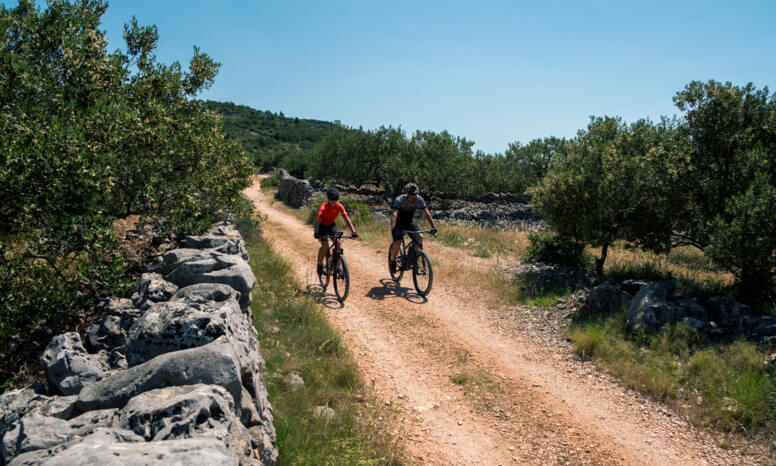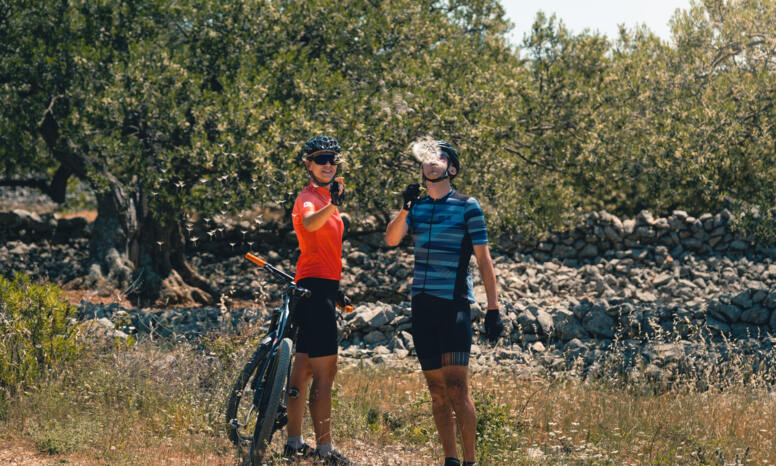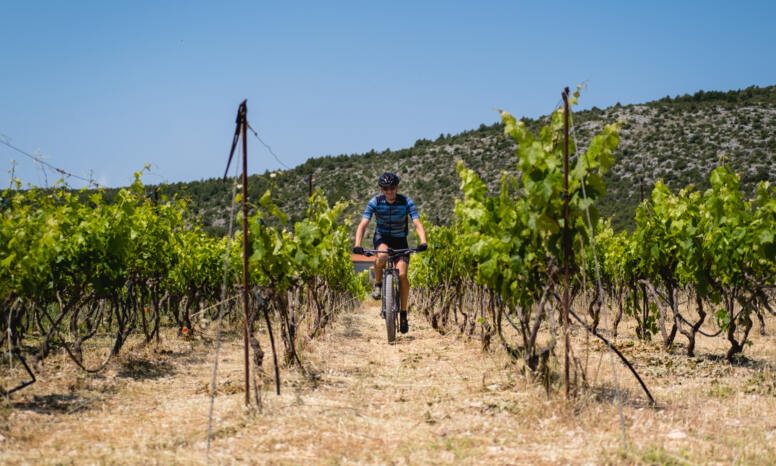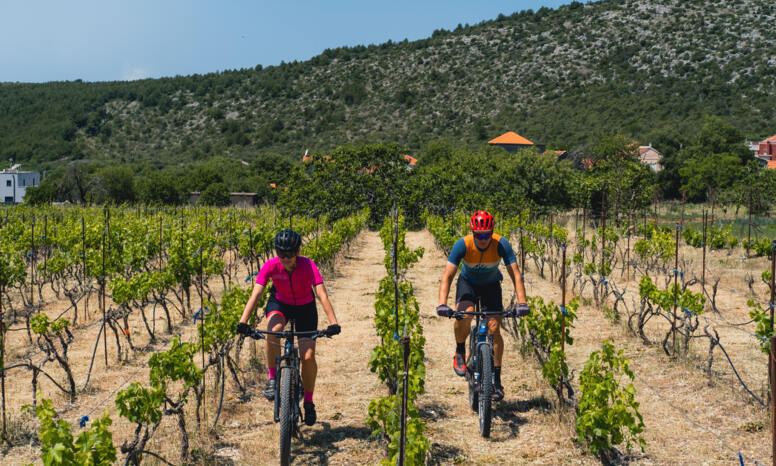Wiele atrakcji kulturalnych i przyrodniczych będzie „jeszcze ciekawsza”, jeśli sprawimy, że podróż do nich będzie przyjemna i interesująca!
Jeżdżąc na rowerze, niezależnie od tego do jakiej kategorii rowerzystów należysz, możesz zwiedzać większość rejonu Mariny. Możesz czerpać radość z naturalnego piękna morskich i górskich krajobrazów Mariny, poznać miejscową ludność i jej zwyczaje, zwłaszcza kulinarne oraz delektować się przysmakami, jakie jednocześnie oferuje tutejsza przyroda i kultura.
At the point where the coast of Trogir, the archipelago and the karst area of Zagora harmoniously meet, emerges the Marina, whose name pays homage to the martyr-saint, protector of the sea and of sailors. Illyrians, Hilini, Romans and ultimately Croats have lived in this area that was conquered by the Venetians and the Ottomans, whilst its armies and governments alternated. Its turbulent past also gave birth to intriguing itineraries, some carved into valuable outlines of cultural heritage, others trodden into the fertile fields by the peaceful olive groves. The tower, which dates back to the era of the Venetian Republic is a recognizable feature of the Marina. Built in the 15th century to protect its inhabitants from attacks from both land and sea, it was expanded with both a fortress and a rampart that surrounded the entire settlement.
Near the Marina is St. James’ Cave, a speleological and historical curiosity, which in prehistoric times served as a shelter, later as a sanctuary, also housing a chapel. In 1891, even Emperor Franz Joseph I visited the cave.
West of Drid hill, in the middle of the Pliće slope, emerges St. James’ Cave, which is about 60 metres deep and 10 metres wide. While in the village of Najevi on Valjalo hill, we can find Valjalo Cave that is about 90 metres deep, maybe more. Najevi also hosts several chapels: St. Joseph’s, St. Lucia’s and the Heart of Jesus. St. George’s, a small medieval church with a cemetery was built on a hill close to Svinca. In the 18th century, it was named after St. Catherine, but later its name was changed.
At the point where the coast of Trogir, the archipelago and the karst area of Zagora harmoniously meet, emerges the Marina, whose name pays homage to the martyr-saint, protector of the sea and of sailors. Illyrians, Hilini, Romans and ultimately Croats have lived in this area that was conquered by the Venetians and the Ottomans, whilst its armies and governments alternated. Its turbulent past also gave birth to intriguing itineraries, some carved into valuable outlines of cultural heritage, others trodden into the fertile fields by the peaceful olive groves. The tower, which dates back to the era of the Venetian Republic is a recognizable feature of the Marina. Built in the 15th century to protect its inhabitants from attacks from both land and sea, it was expanded with both a fortress and a rampart that surrounded the entire settlement.
Near the Marina is St. James’ Cave, a speleological and historical curiosity, which in prehistoric times served as a shelter, later as a sanctuary, also housing a chapel. In 1891, even Emperor Franz Joseph I visited the cave.
West of Drid hill, in the middle of the Pliće slope, emerges St. James’ Cave, which is about 60 metres deep and 10 metres wide. While in the village of Najevi on Valjalo hill, we can find Valjalo Cave that is about 90 metres deep, maybe more. Najevi also hosts several chapels: St. Joseph’s, St. Lucia’s and the Heart of Jesus. St. George’s, a small medieval church with a cemetery was built on a hill close to Svinca. In the 18th century, it was named after St. Catherine, but later its name was changed.

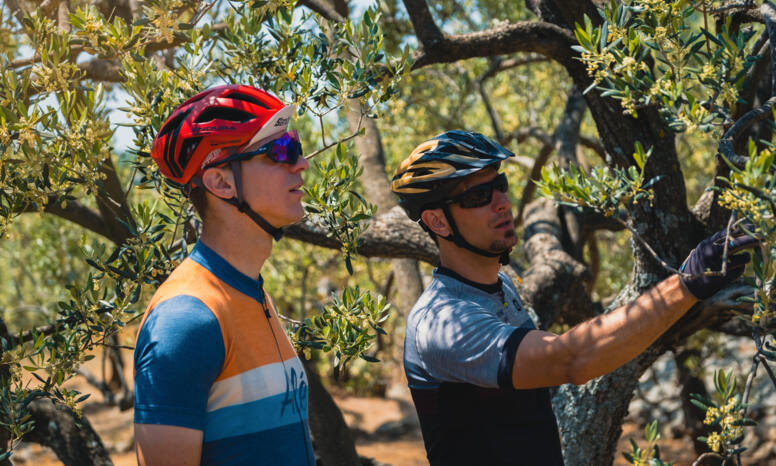
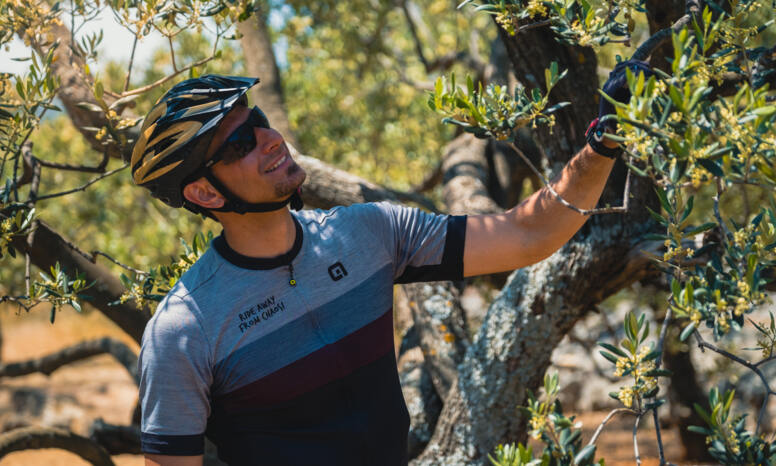
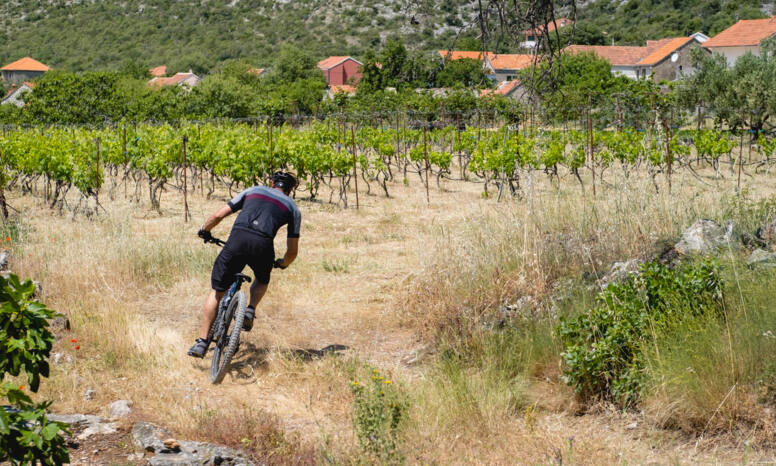
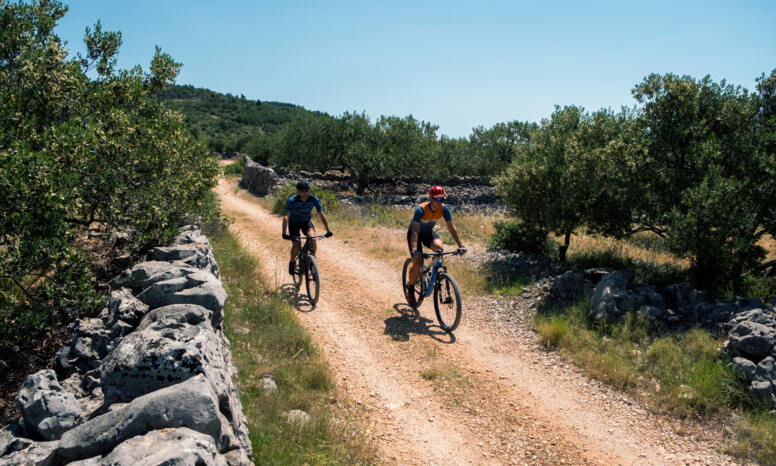

Marina, a magical place in the heart of Dalmatia, is mentioned in medieval sources as early as 1070, although in the past it went under different names, the oldest known being the pre-Slavic one, Bausiona and Drid. The old name for Marina was Bosiljina, which has been mentioned since the 9th century as part of the parish of Trogir, and according to the former village that was once known as Baselen (Bosilen).
The inhabitants here were fishermen and farmers, and the centuries-old olive trees produced the oils for which the area was widely known. The once poor, traditional diet that included fish, seasonal vegetables, and virgin olive oil, is today recognised as being the healthiest way of eating - the Mediterranean diet, which is also on the UNESCO list of intangible world heritage.
Marina is recognisable by its picturesque Kaštil, part of a former 15th century fortification complex, which was supposed to protect it from Turkish incursions. It was one of the most populated and richest places in Dalmatia when it was strongly attacked by the Turkish army in 1657. Defending themselves with all the available weapons, the locals, including some 30 young women in men's uniforms, beat off the formidable enemy, but during the final attack after a seven-day defence, almost all of them died. Two captured young widows, Kate and Matuša, were spared death by the astonished Turks.
Marina, a magical place in the heart of Dalmatia, is mentioned in medieval sources as early as 1070, although in the past it went under different names, the oldest known being the pre-Slavic one, Bausiona and Drid. The old name for Marina was Bosiljina, which has been mentioned since the 9th century as part of the parish of Trogir, and according to the former village that was once known as Baselen (Bosilen).
The inhabitants here were fishermen and farmers, and the centuries-old olive trees produced the oils for which the area was widely known. The once poor, traditional diet that included fish, seasonal vegetables, and virgin olive oil, is today recognised as being the healthiest way of eating - the Mediterranean diet, which is also on the UNESCO list of intangible world heritage.
Marina is recognisable by its picturesque Kaštil, part of a former 15th century fortification complex, which was supposed to protect it from Turkish incursions. It was one of the most populated and richest places in Dalmatia when it was strongly attacked by the Turkish army in 1657. Defending themselves with all the available weapons, the locals, including some 30 young women in men's uniforms, beat off the formidable enemy, but during the final attack after a seven-day defence, almost all of them died. Two captured young widows, Kate and Matuša, were spared death by the astonished Turks.
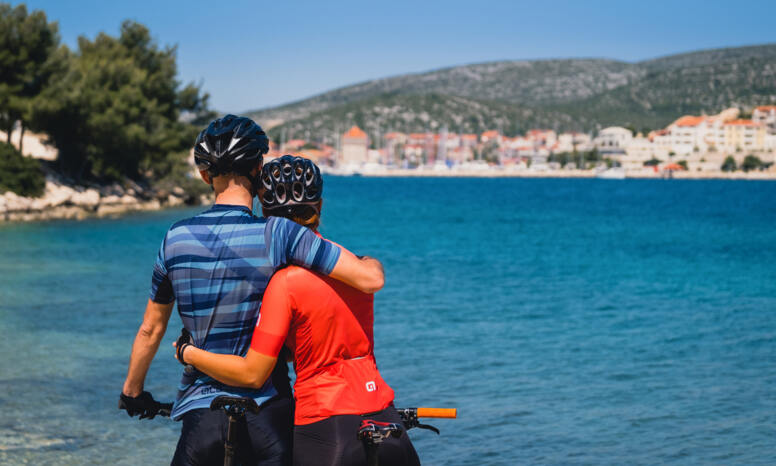
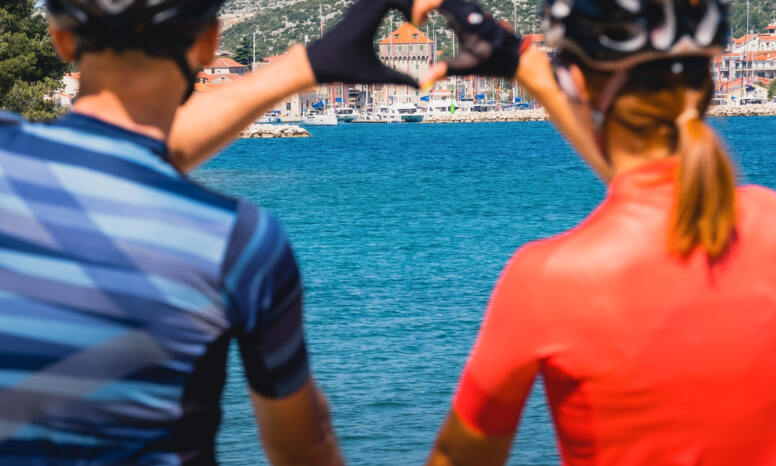
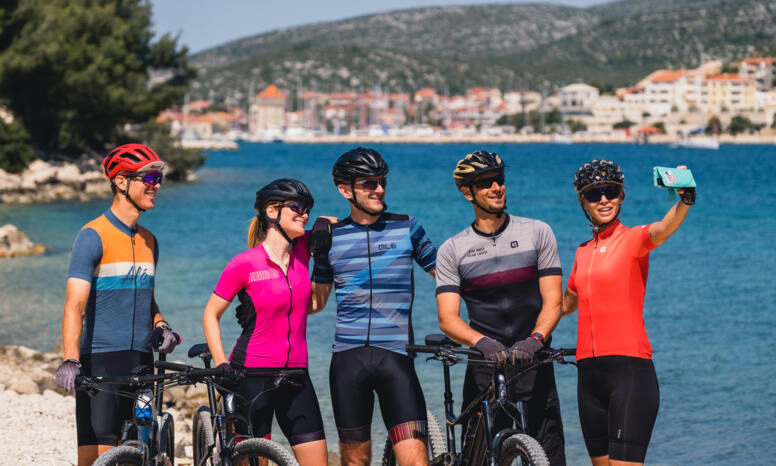
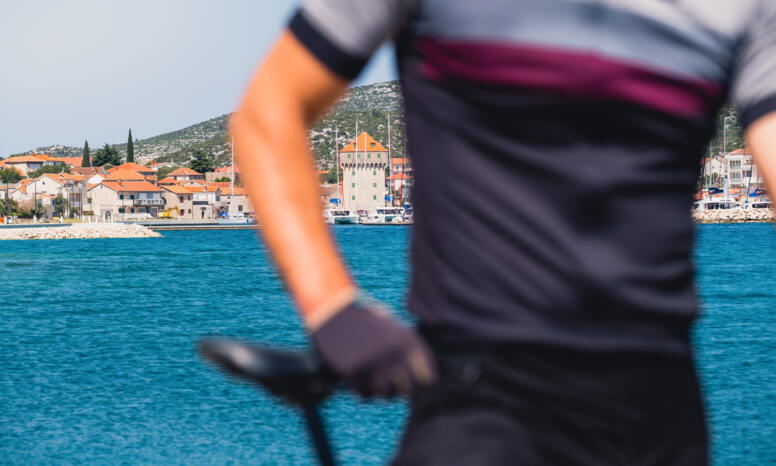
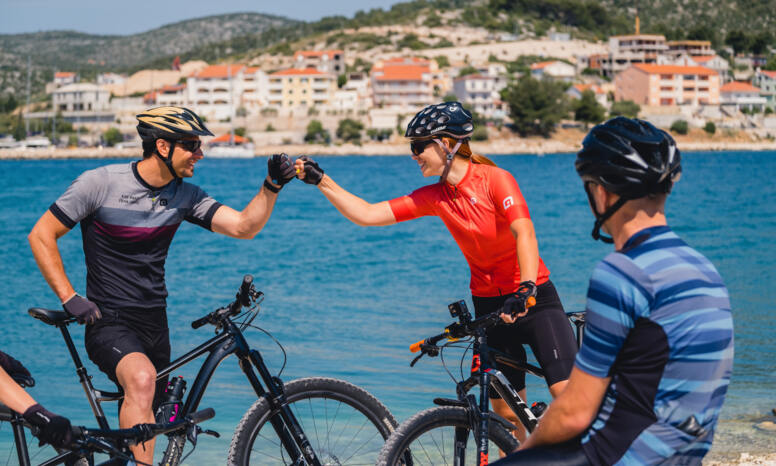
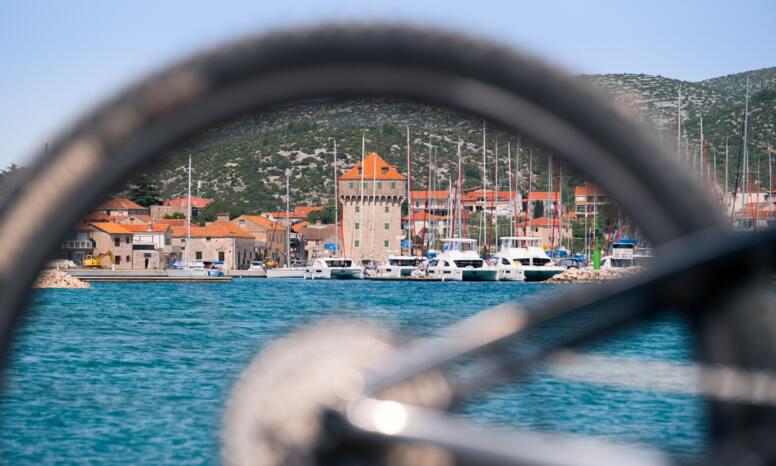
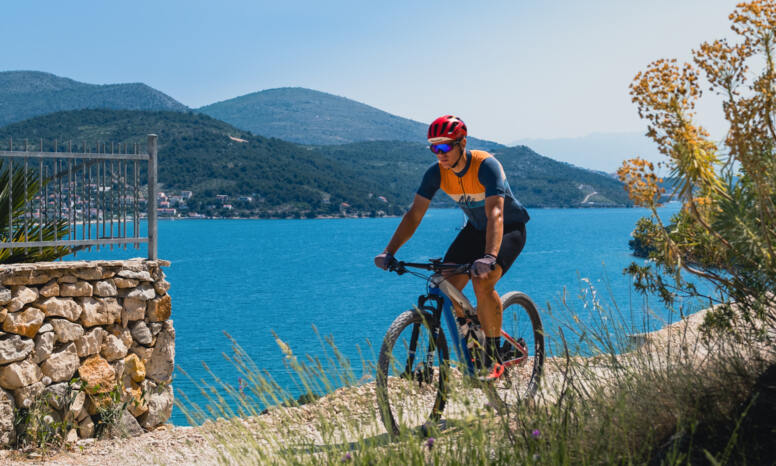
The history of the Ottoman conquest of these areas is well-known, but the times of ugly conflicts left behind traces and some testimonies, the beauty of which delights us today and calls for new research. Thus, in the second half of the 15th century, the inhabitants and the shores of the gorgeous Marina Bay were threatened by the danger of Turkish penetration, so at the request of Bishop Marcello, Prince Barbarigo of Trogir approved the construction of a fort to defend the place.
In the bay near the church of St. Marina from 1495 to 1500, a square tower with three floors was built as the bishop's residence of Fran Marcello, whose initials with the coat of arms are above the door that were secured by the loopholes. The bishop's tower, Kaštil, was built on cliffs in the sea, and the unique defence complex also included the Citadel, a fort located on land. The canal between them was buried at the beginning of the 20th century.
Besides the Adriatic blue, Marina also has its green side. Culture and tradition, original Dalmatian customs, costumes, gastronomy, traditional villages of stone houses have been preserved in its hinterland. Here, the rich historical heritage competes with the beauty of the almost untouched nature of the Marina’s hinterland.
The history of the Ottoman conquest of these areas is well-known, but the times of ugly conflicts left behind traces and some testimonies, the beauty of which delights us today and calls for new research. Thus, in the second half of the 15th century, the inhabitants and the shores of the gorgeous Marina Bay were threatened by the danger of Turkish penetration, so at the request of Bishop Marcello, Prince Barbarigo of Trogir approved the construction of a fort to defend the place.
In the bay near the church of St. Marina from 1495 to 1500, a square tower with three floors was built as the bishop's residence of Fran Marcello, whose initials with the coat of arms are above the door that were secured by the loopholes. The bishop's tower, Kaštil, was built on cliffs in the sea, and the unique defence complex also included the Citadel, a fort located on land. The canal between them was buried at the beginning of the 20th century.
Besides the Adriatic blue, Marina also has its green side. Culture and tradition, original Dalmatian customs, costumes, gastronomy, traditional villages of stone houses have been preserved in its hinterland. Here, the rich historical heritage competes with the beauty of the almost untouched nature of the Marina’s hinterland.
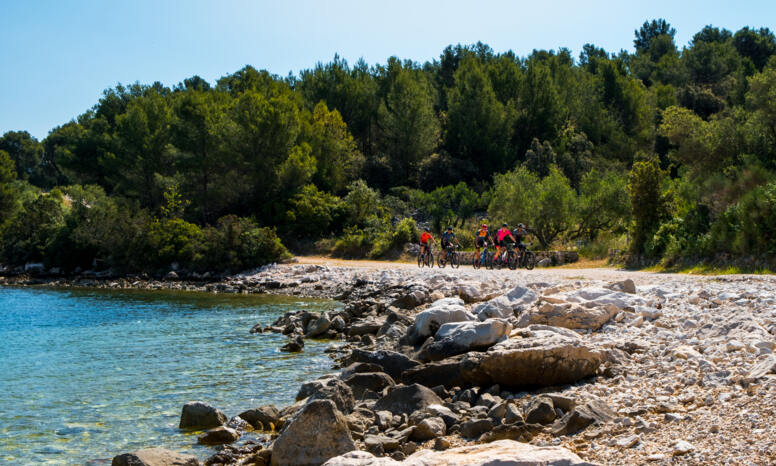
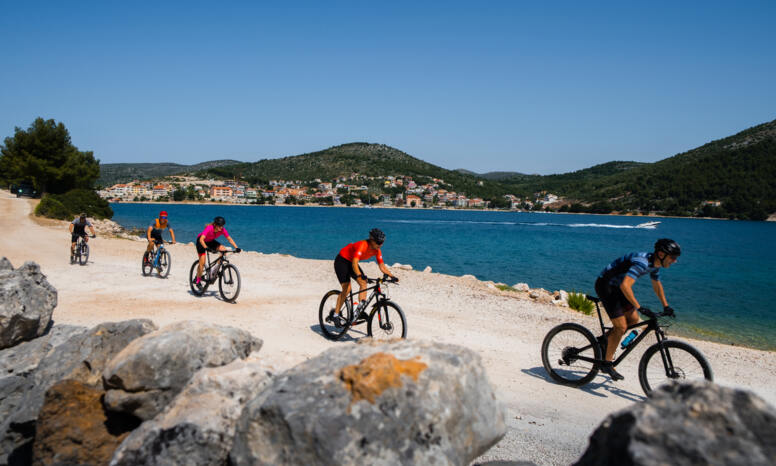
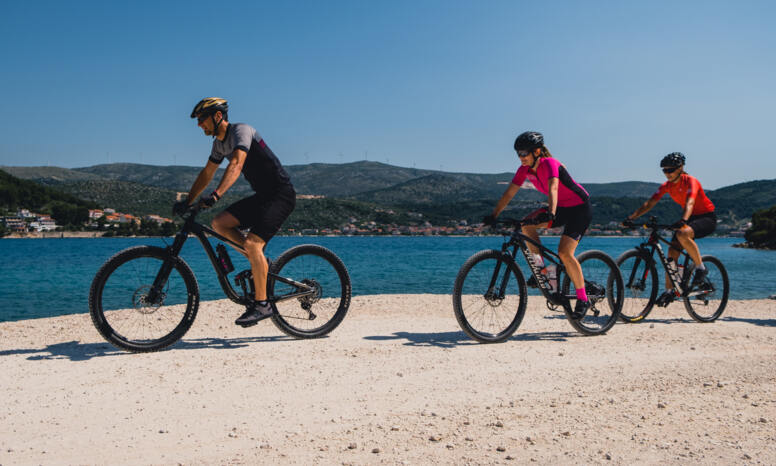
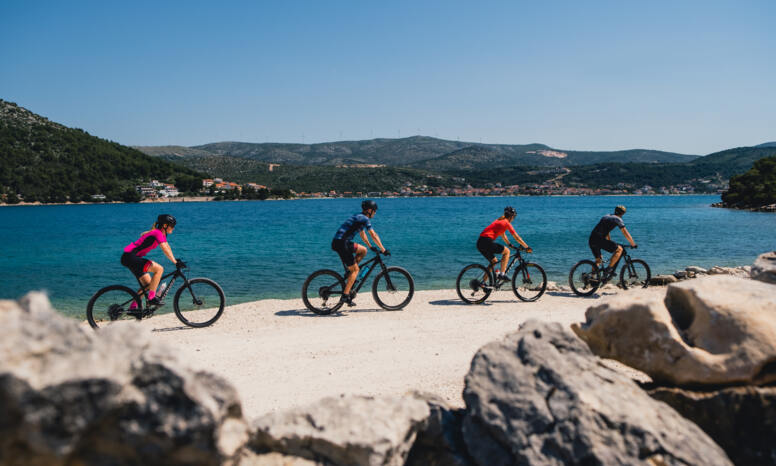
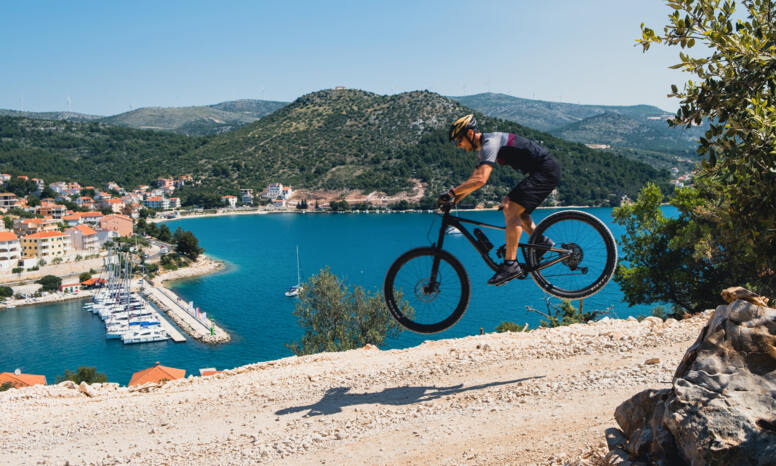
Located between Rogoznica and Trogir, elongated in the direction from west to east for only 5 and a half kilometres, the Marina peninsula in the southeast of the municipality is encrusted with endless blue gems - enchanting bays of the crystal-clear sea. It is bordered by the Čiovo and Drvenilki canals, Marina and Viniška bays, Fangara, Bakakarac, Velika and Mala Borovica coves, Voluja and Ljubljeva beaches...
This rugged land, on which vines and olive trees thrive, rises up to 288 metres on the highest peak, Velo. In the deep cove of the same name, the picturesque Vinišće begins its tale sometime in the Middle Ages, and owes its name to the vine, because vinišća is an old Croatian word for vineyards. Plantations were planted here by Roman military veterans, and wine was probably shipped to other regions, so it is not unusual to assume that at the bottom of the bay, in addition to the complex of villae rusticae at Japlena gomila site, there was also a Roman dock.
Safe bay often sheltered the ships that passed here, and Trogir Cathedral was built using the stone from the famous quarries.
At the time of the Ottoman invasion, Vinišće was an important point in the defence of Dalmatia, but in 1537, after the fall of Klis, almost two dreary centuries followed, when this area endured all the hardships of being located on the border between the Republic of Venice and the Ottoman Empire.
Located between Rogoznica and Trogir, elongated in the direction from west to east for only 5 and a half kilometres, the Marina peninsula in the southeast of the municipality is encrusted with endless blue gems - enchanting bays of the crystal-clear sea. It is bordered by the Čiovo and Drvenilki canals, Marina and Viniška bays, Fangara, Bakakarac, Velika and Mala Borovica coves, Voluja and Ljubljeva beaches...
This rugged land, on which vines and olive trees thrive, rises up to 288 metres on the highest peak, Velo. In the deep cove of the same name, the picturesque Vinišće begins its tale sometime in the Middle Ages, and owes its name to the vine, because vinišća is an old Croatian word for vineyards. Plantations were planted here by Roman military veterans, and wine was probably shipped to other regions, so it is not unusual to assume that at the bottom of the bay, in addition to the complex of villae rusticae at Japlena gomila site, there was also a Roman dock.
Safe bay often sheltered the ships that passed here, and Trogir Cathedral was built using the stone from the famous quarries.
At the time of the Ottoman invasion, Vinišće was an important point in the defence of Dalmatia, but in 1537, after the fall of Klis, almost two dreary centuries followed, when this area endured all the hardships of being located on the border between the Republic of Venice and the Ottoman Empire.

